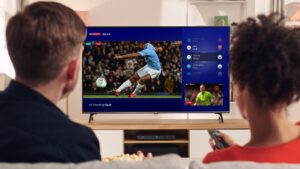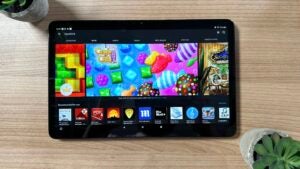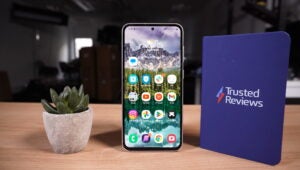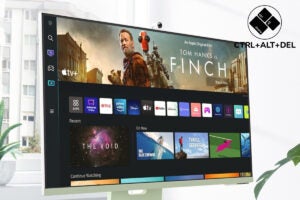
OPINION: I’ve been testing the Samsung M8 Smart Monitor in recent weeks and I’ve been really impressed by its ability to function like a smart TV, providing access to multiple streaming apps without the need of an external PC.
You could of course argue that this is a pointless feature considering you’ll most likely be using the monitor paired with a PC anyway, but there are many benefits for a monitor to be able to function independently.
The Samsung M8 can turn on and switch to the likes of Netflix in a matter of seconds, far quicker than it takes for any PC to boot up and since you can use either a remote or the voice command functionality, there’s no need to faff around with a keyboard and mouse.
The Samsung M8 is all about convenience, just like a smart TV. Even with multiple streaming devices now available such as Google Chromecast, Amazon’s Fire Stick and Apple TV, we all still appreciate the convenience provided by a TV’s smart functionality. That way, we can switch to Netflix without needing to boot up a second device.
So why can’t we have that same experience with a monitor? To the best of my knowledge, Samsung is currently the only company to sell smart monitors. I feel that Apple has especially missed a trick since the new Studio Display apparently has the equivalent specs of an iPad stuffed inside, yet still needs to be connected to a Mac in order to function.
Imagine an Apple monitor that could access the likes of Apple TV+ and Apple Music independently, or even use Siri to control your surrounding smart home gadgets. By giving it support for AirDrop, it would be able to work in tandem with your iPhone and iPad. Such smart features would make the Studio Display far more compelling, becoming the central hub of your bedroom or study rather than a mere accessory to your Mac.
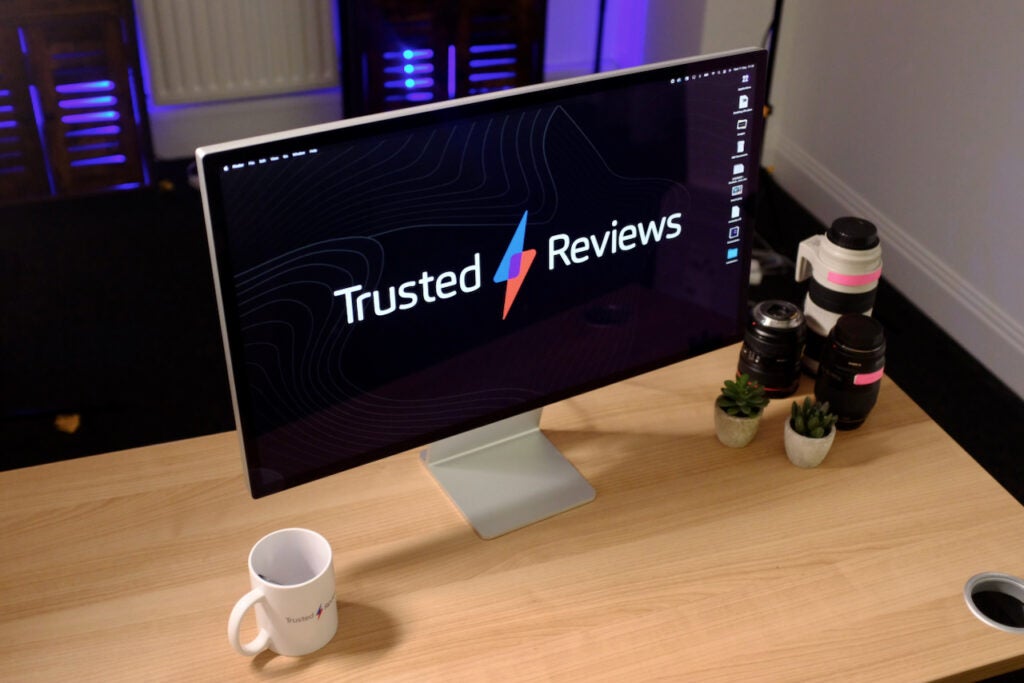
I’d personally love a smart monitor in my bedroom. Sometimes I like to watch TV from the comfort of my bed, especially in the winter when I want to wrap myself up with the duvet, but my gaming PC doesn’t work well in this situation as I can’t switch between apps or alter the volume without leaving my bed. That’s why I use Nvidia’s Shield TV, which allows me to stream all of my favourite apps and use a remote control, just as I would with a smart TV,
But at nearly £130, the Nvidia Shield TV is a hefty expense – it makes sense to cut out the middleman and have all of these features stuffed inside a monitor by default. There’d still be a use for the likes of Shield TV, since it offers high-end features such as AI upscaling, but it just wouldn’t be essential for turning your monitor into an entertainment hub.
I can think of many different people who would benefit from a smart monitor, too. Students spring to mind, as they usually live in cramped little bedrooms where there’s no space for a massive TV. A smart monitor would not only act as a replacement to a standard TV, but could also double up as a second screen for studying.

A smart TV would also be useful for those who don’t want a massive TV taking up large amounts of space in their living room. The smallest 4K TV you can generally buy these days will have a 43-inch screen – that’s not exactly small in my book. In comparison, 4K monitors often range between 28- and 32-inches, and so they take up considerably less space. By adding in smart functionality, it would enable more people to consider opting for a monitor instead of a huge wide-screen telly.
I’m actually struggling to think of a drawback to making monitors smarter. The added cost is an obvious one, but the Samsung M7 Smart Monitor is currently available for just £399, which is outstanding value for a 4K monitor. So it’s evidently possible to sell a smart monitor at a reasonable price.
The second obstacle could be ensuring you have a quality operating system. Samsung has been using Tizen for its TVs since 2015, so it was easy enough to add support for its monitor. Companies such as Acer, Asus, Dell and HP however don’t have much (if any) experience selling TVs, and so would need to design their own operating system or partner up with another company such as Google. That’s a tricky issue, albeit one that can be solved with enough investment, but I think it’s worth tackling.
After using the Samsung M8 Smart Monitor, I’m convinced that smart monitors are the future and that any company that refuses to embrace the new trend risks falling behind.
Ctrl+Alt+Delete is our weekly computing-focussed opinion column where we delve deeper into the world of computers, laptops, components, peripherals and more. Find it on Trusted Reviews every Saturday afternoon.
The post Ctrl+Alt+Delete: Samsung has proved that monitors need to be smarter appeared first on Trusted Reviews.
More on…www.trustedreviews.com









